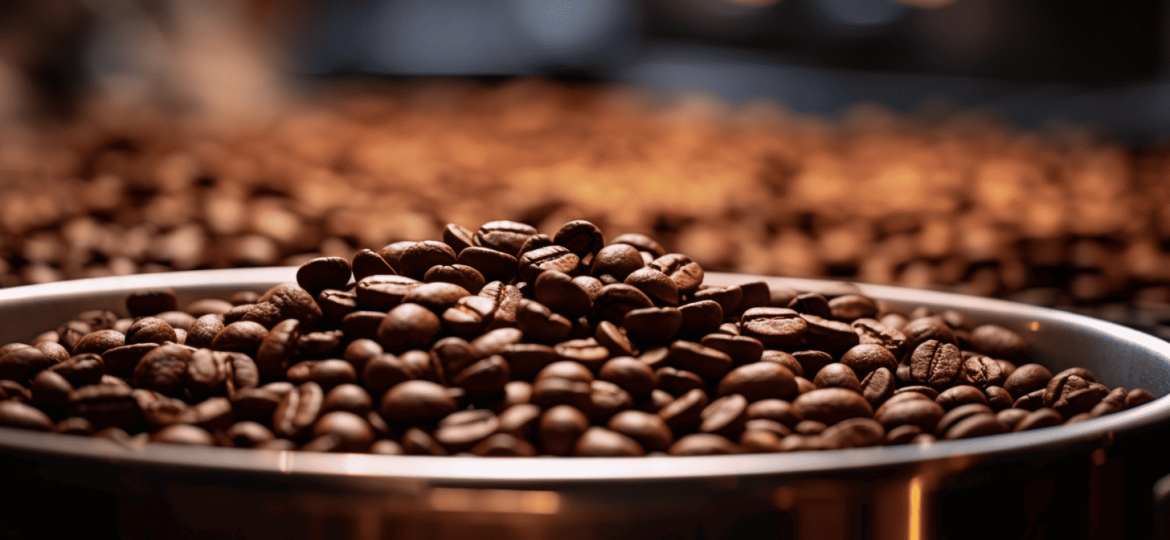
The process of brewing coffee, a ritual embraced globally, hinges significantly on one crucial step: the grinding of coffee beans. This initial action is far from a mere preparatory task; it is the cornerstone of extracting the rich, complex flavors coffee aficionados cherish.
The interplay between bean quality, grind consistency, and brewing technique defines the essence of each cup. This discussion not only navigates through the mechanics of coffee grinding but also elucidates its pivotal role in enhancing flavor extraction, setting the stage for a deeper appreciation of coffee brewing as both an art and a science.
Why Grinding Matters
The act of grinding coffee beans is not just a preparatory step but a transformative one. By breaking down beans into smaller particles, grinding significantly increases their surface area, making the flavorful and aromatic compounds within more accessible during brewing.
This process is critical for freshness, as it initiates the release of oils and flavors that define a coffee’s character. However, the timing of grinding is equally vital; doing so right before brewing ensures the essence of the bean is captured in its most potent form, undiminished by exposure to air, which rapidly accelerates flavor degradation.
The Science Behind Coffee Extraction
Grind size plays a quintessential role in the science of coffee extraction. Different brewing methods demand varying grind sizes to achieve an optimal extraction rate. For instance, espresso requires a fine grind to maximize flavor extraction in a short brewing time, whereas French press coffee benefits from a coarser grind, allowing for a slower extraction that avoids over-extraction and bitterness.
This meticulous balance between grind size and extraction method is fundamental to achieving the desired flavor profile and strength. It’s a testament to the intricate relationship between the physical characteristics of ground coffee and the chemical process of extraction, where water acts as the solvent, drawing out flavors and compounds through contact with the coffee grounds.
Alternative Brewing Techniques
The journey to a perfect cup of coffee often begins with whole beans, necessitating techniques beyond the conventional coffee maker. Among these, the French Press stands out for its simplicity and effectiveness, requiring a coarse grind to prevent grounds from passing through the mesh filter. This method, steeping grounds directly in hot water, enhances flavor extraction, producing a rich and full-bodied brew.
The steeping method offers a straightforward approach, immersing coarsely ground beans in hot water to slowly extract flavors. This technique, akin to making tea, emphasizes patience and precision, yielding a cup that is both robust and nuanced.
Lastly, the double boiler method provides a unique take on brewing with whole beans. It involves using two pots to create indirect heat, gently coaxing flavors from the beans without scorching them. This method, although less common, showcases the versatility of coffee brewing techniques, catering to the adventurous brewer.
Step-by-Step Guide for Brewing with Whole Beans
Brewing coffee from whole beans without a grinder requires creativity and a willingness to experiment. One such method involves using a mason jar and a saucepan to simulate a gentle extraction process. Begin by filling a mason jar three-quarters full with whole coffee beans, then topping it up with hot water just off the boil.
Place the jar in a saucepan filled with water, ensuring the levels inside and outside the jar are equal. Simmer this assembly for about an hour, occasionally stirring the beans within the jar. This method, while time-consuming, offers a unique way to brew coffee, emphasizing the slow release of flavors.
Cold Brew and French Press Methods
Cold brew coffee, celebrated for its smoothness and reduced acidity, can also be made using whole beans. This method requires steeping beans in cold water for an extended period, typically 12-24 hours, in the refrigerator. The result is a concentrate that can be diluted with water or milk, served either cold or heated. This technique highlights the beans’ subtle flavor notes, offering a refreshing alternative to traditional brewing methods.
Using a thermos as a French press alternative presents a novel approach to brewing with whole beans. Fill the thermos with hot water and whole beans, then seal and let it steep. This method not only brews a flavorful cup of coffee but also maintains its warmth for extended periods, thanks to the thermos’s insulating properties. It’s an ingenious solution for those seeking convenience without compromising on taste.
Pros and Cons of Brewing with Whole Beans
Brewing coffee with whole beans offers the distinct advantage of capturing the freshest flavors from the coffee. Since the beans are not ground until just before brewing, they retain their aromatic oils and flavors better than pre-ground coffee, resulting in a more vibrant cup.
However, this method comes with its challenges, notably the longer brewing time and the need for specialized equipment or innovative methods to extract flavors effectively from whole beans. These considerations may deter those seeking convenience but appeal to enthusiasts eager to explore the depths of coffee’s flavor potential.
Why Freshly Ground Beans Are Superior
The superiority of freshly ground beans lies in their unparalleled freshness and flavor. Grinding beans just before brewing minimizes exposure to air, preserving the coffee’s volatile compounds that contribute to its aroma and taste. This process ensures that the coffee’s natural qualities are fully expressed in the brew, leading to a superior taste experience.
The contrast in flavor between coffee made from freshly ground beans and that from pre-ground coffee is significant, with the former offering a richer, more complex profile that can vary greatly depending on the bean’s origin, roast, and grind size.
FAQs
- Why do whole beans take longer to brew? Whole beans have a reduced surface area compared to ground coffee, slowing the extraction process. This means that the water takes longer to penetrate and extract flavors from whole beans.
- Can you make cold brew with whole beans? Yes, cold brew can be made with whole beans, but it requires an extended steeping time of 12-24 hours to ensure proper flavor extraction. This method is known for producing a smoother, less acidic coffee.
- Are whole beans fresher than ground coffee? Whole beans are generally fresher than ground coffee. They have a longer shelf life and retain their flavor and aroma longer because they are less exposed to oxygen and moisture, which can degrade coffee quality.
Conclusion
The exploration of brewing coffee with whole beans versus ground coffee reveals a world rich in flavor, tradition, and innovation. While freshly ground beans are superior for capturing the essence of coffee at its peak, whole beans offer an adventurous route for those willing to explore unconventional brewing methods.
Each approach brings its own set of advantages and considerations, from the freshness of the flavor to the practicality of preparation. Enthusiasts are encouraged to experiment with different methods and grind sizes to discover their perfect cup, embracing the journey through the vast and varied landscape of coffee brewing.









